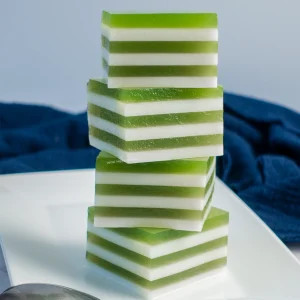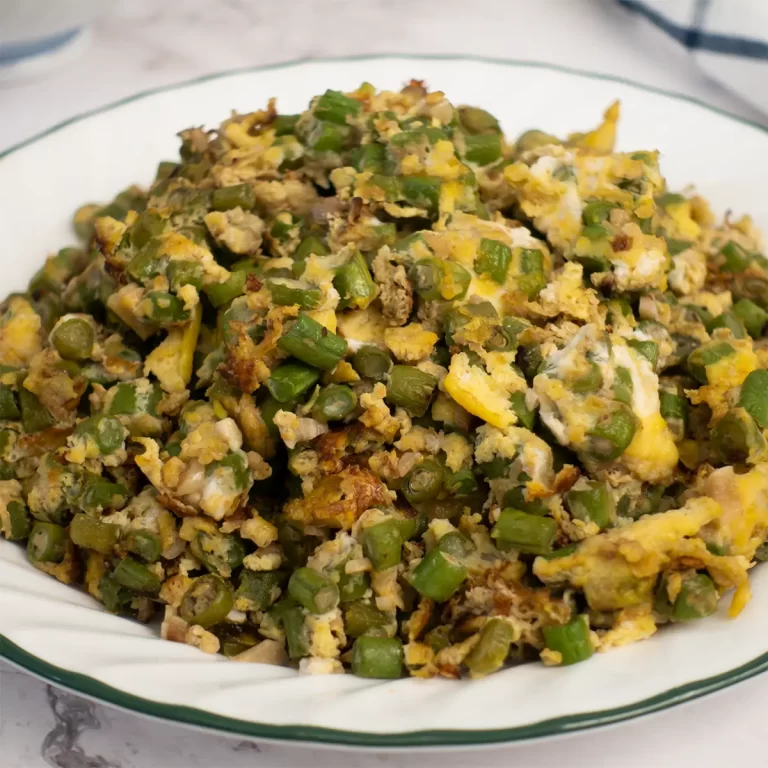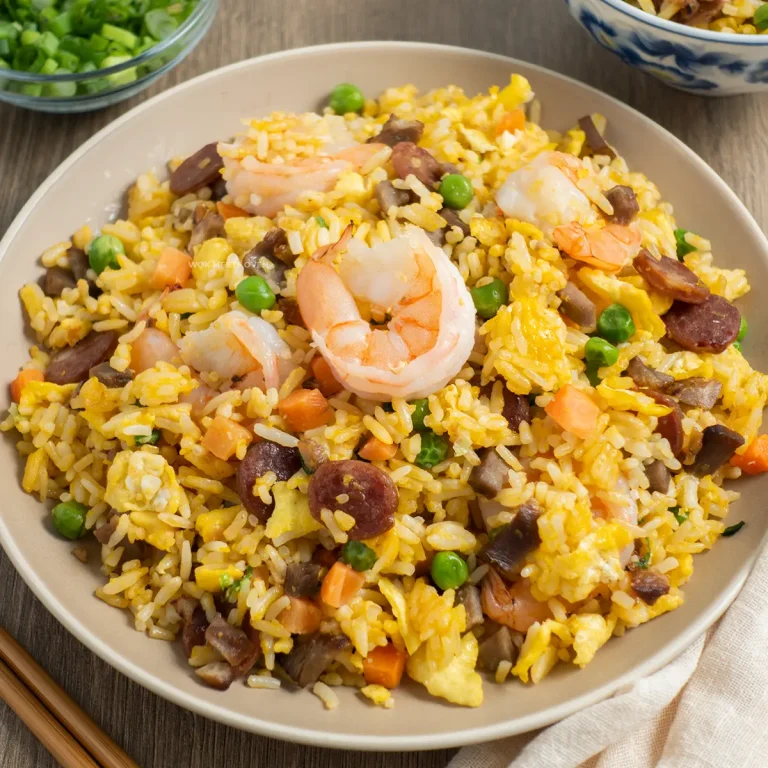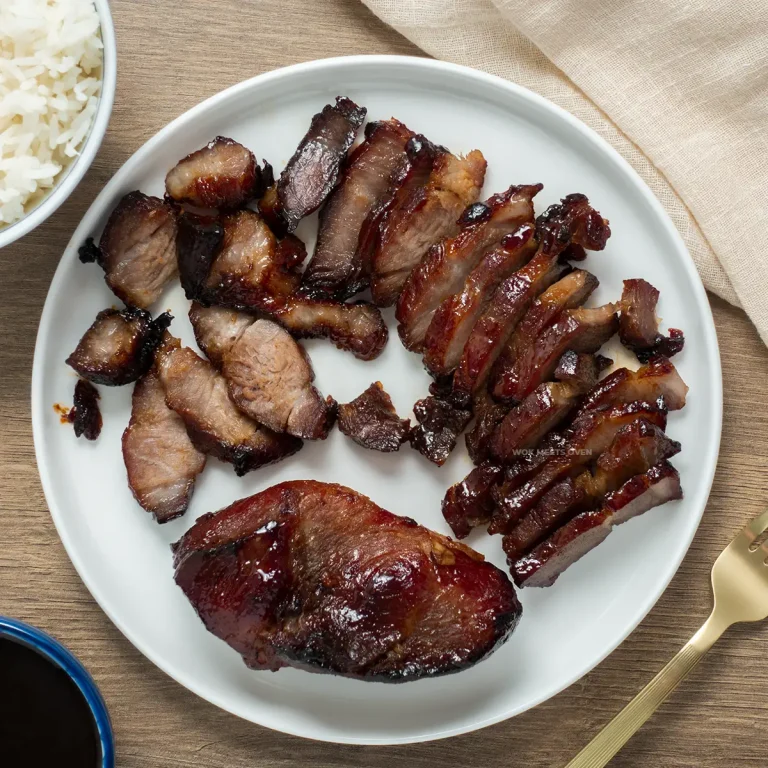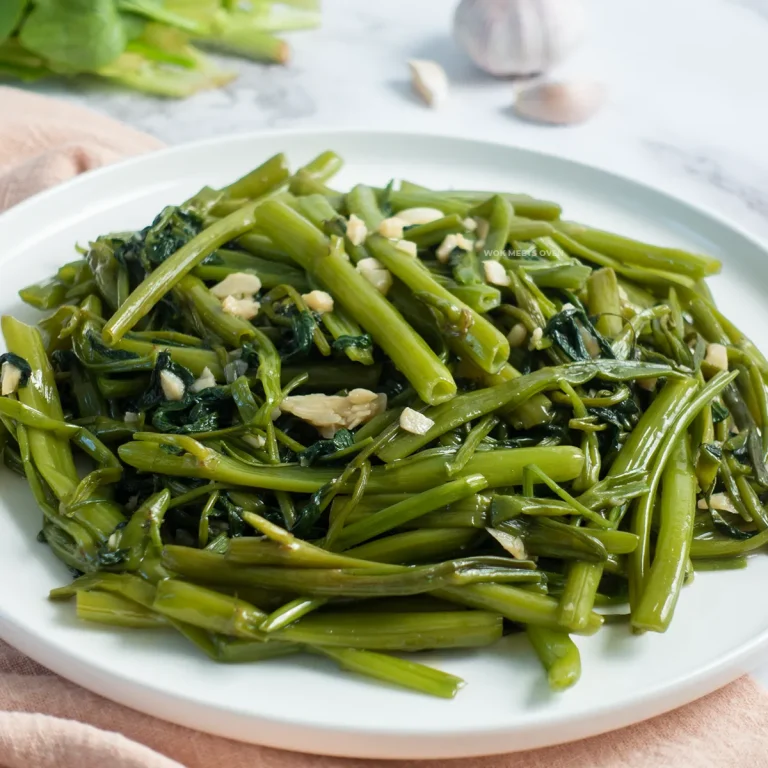Braised E-Fu Noodles With Mushrooms
Simple easy flavorful noodle dish packed with rich umami flavor that symbolizes long life, this braised e-fu (yee mein) noodles with mushroom recipe will soon become a family favorite.
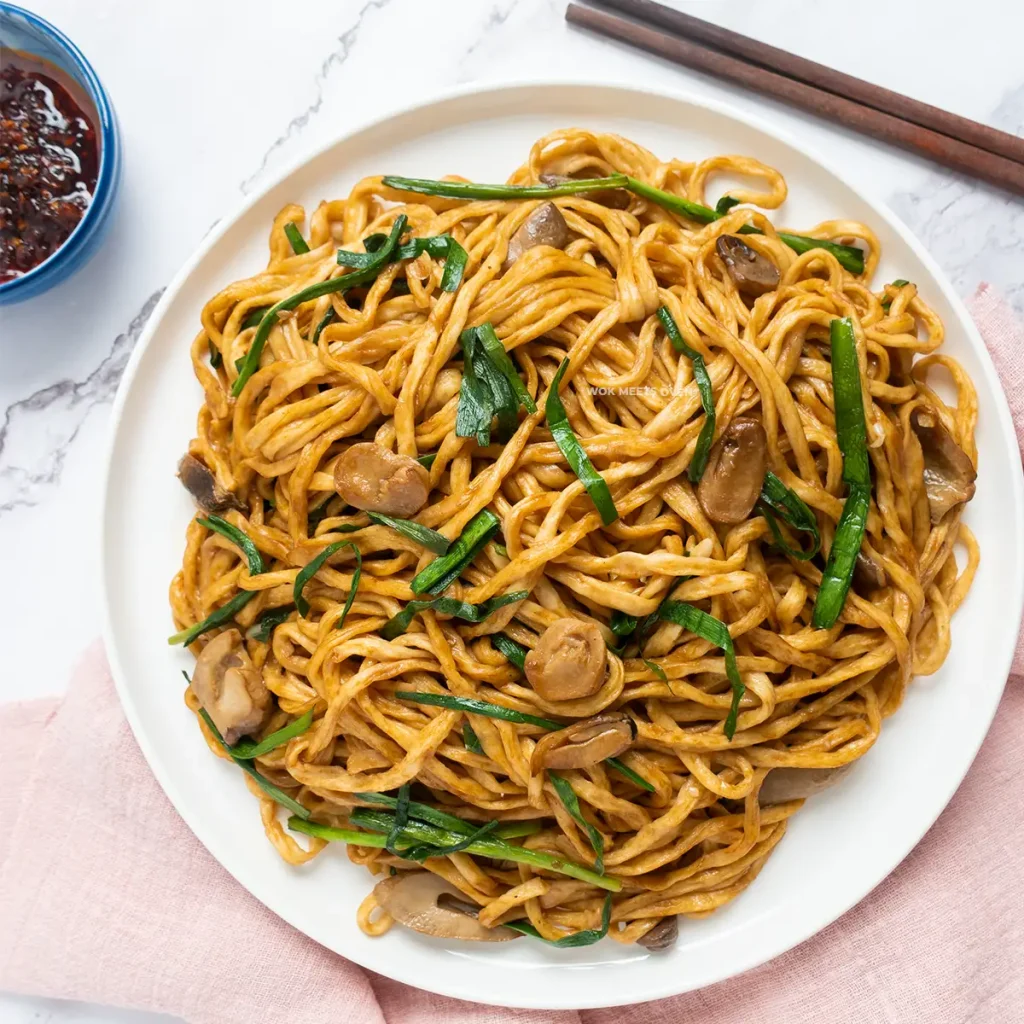
What is Yee Mein Noodles?
Yee mein noodles (伊麵) also known as yi mein, and e-fu noodles is a type of Chinese wheat noodles that is typically sold pre-fried. You’ll usually find it in a large circular shape at Asian grocery stores. Unlike regular Chinese egg noodles, yee mein noodles have a chewy bouncy type of texture and tend to soak up sauces really well, giving the noodles a tonne of flavor. When using this type of noodles, you typically need to blanch them first before cooking with it.
What Is Braised E-fu Noodles?
Braised e-fu noodles also known as 乾燒伊麵 in Cantonese is a famous Chinese dish consisting of e-fu noodles that are braised in a delicious savory sauce and cooked together with mushrooms and yellow chives. This dish also goes by different names such as longevity noodles and long life noodles (Yah I know confusing right? 🙄). The noodles in this dish are very flavorful as they typically soak up all of the sauce in the dish, and have a nice chewy spongy texture when you bite into them, however if you overcook the noodles then they will become soft and soggy 🤮.
Typically you’ll see this dish being served up at upscale Chinese restaurants during a special banquet event such as a wedding, when someone has just given birth, birthdays, especially for elders, and Chinese New Year.
I remember when I was small, I used to love going to wedding banquet events as I knew there would be an opportunity to eat braised e-fu noodles, however my parents, especially my mother wasn’t too fond of taking me along with her to her friend’s wedding events as it meant an extra red pocket would be required for my attendance. Putting in too small an amount in the red pocket meant that you were cheap and would lose face while putting in a generous amount especially for a child appeared like a waste of money. Needless to say I didn’t go to a lot of wedding banquets lol.
Where to Buy E-fu Noodles
E-fu noodles can be found at most Asian supermarkets. You’ll typically find them in the noodle section. If your local Asian supermarket does not sell them then you can try ordering it online from an Asian supermarket such as T & T if you’re located in Canada or you can substitute it with the dried version. I saw Walmart selling a dried version online. It might be called something different though such as long life noodles, longevity noodles, yi mein, or yee mein but it’s pretty much the same thing.
Are Longevity Noodles Healthy?
Well, considering that longevity noodles are first fried before being braised, I’d say no! A 100g serving of longevity noodles is about 240 calories, which will barely keep you satiated. Now add on top of that the sauces, cooking oil, plus toppings for this mushroom yee mein recipe…
Well, you get the picture 🤣
Longevity Noodles Ingredients
- 200g E-fu noodles (1 package)
- 1 can of straw mushrooms
- 80g of Chinese chives
- 1 cup (250ml) of chicken stock/broth
- 3-4 cloves of minced garlic
- 1 tsp of Chinese cooking wine (Shaoxing wine)
- 1 Tbsp of cooking oil
- Slice of ginger
- 1 tsp of sesame oil to garnish
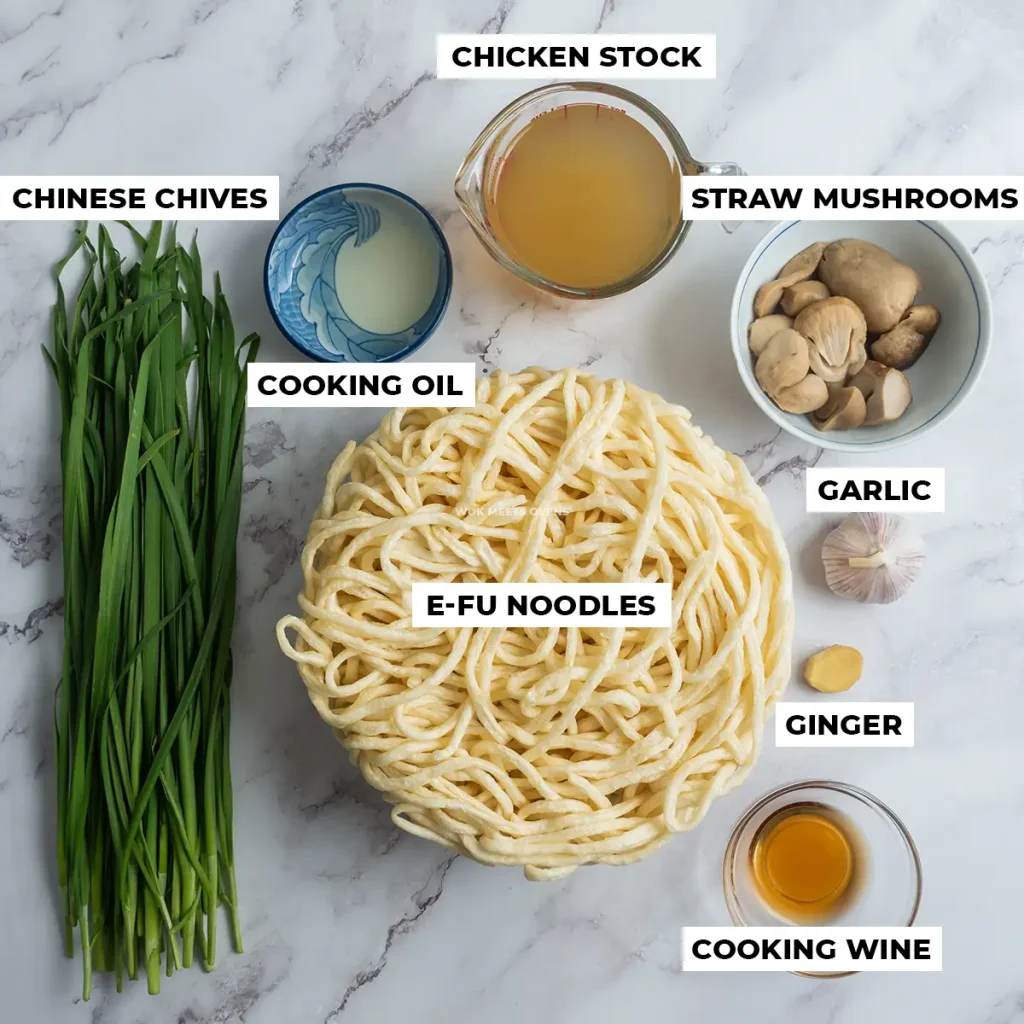
longevity noodles sauce:
- 2 tsp of light soy sauce
- 2 Tbsp of Oyster sauce
- 1/2 tsp of dark soy sauce
- 1/4 tsp of table salt
- 1 tsp of white pepper
- 1 tsp of white granulated sugar
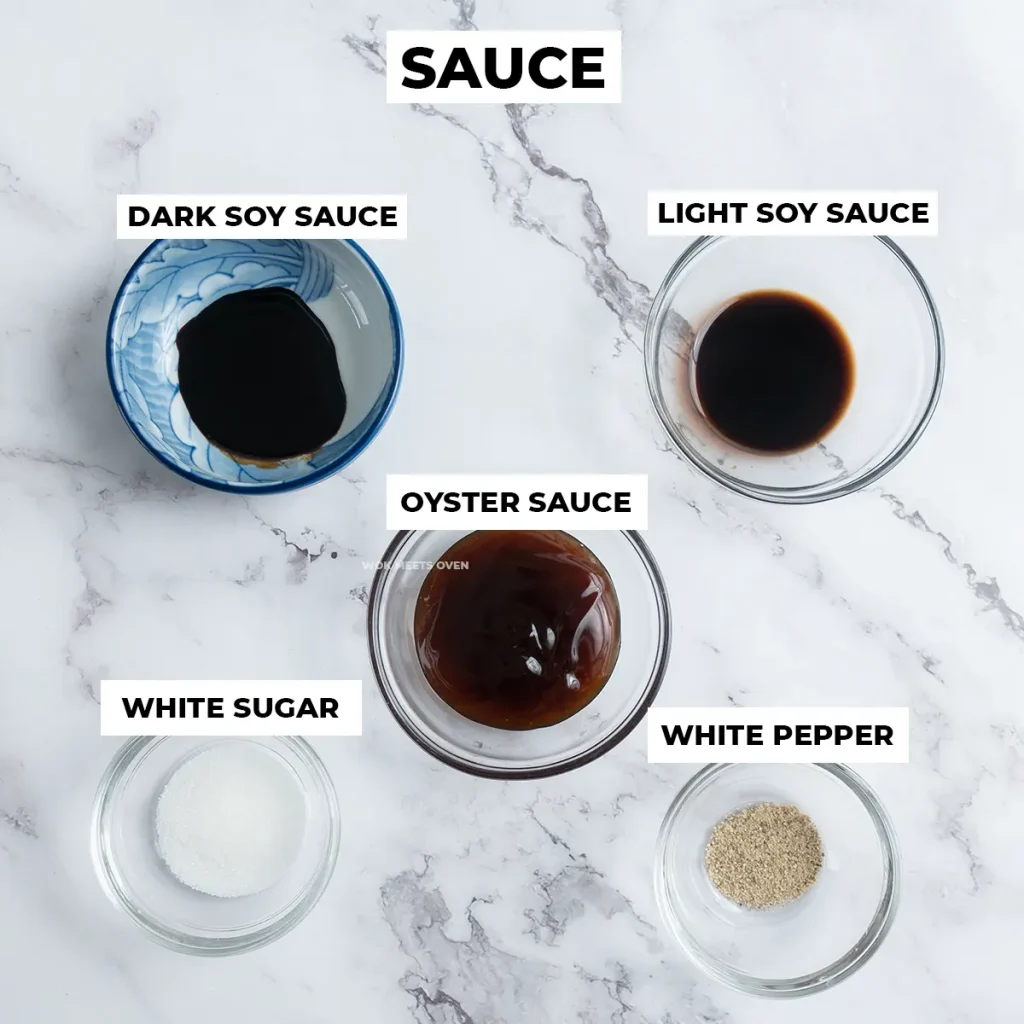
Ingredient Notes
E-fu Noodles/ Yee Mein Noodles/ Yi Mein Noodles: These noodles typically come pre-fried in a large circular package covered with plastic wrap. They aren’t meant to be eaten straight out of the package as the noodles are still very oily and will have a sort of unpleasant oily smell to it. Instead, the noodles need to be blanched first to get rid of all the excess oil and then the noodles are cooked in the dish.

Chinese chives: Also known as garlic chives. Chinese chives are known for their distinct green color and sort of garlicky flavor. Sometimes they are eaten fresh and used as a garnish, like when eating wonton noodles. For my recipe, I opted to use Chinese chives instead of yellow chives as they are readily available and also cheaper than yellow chives.
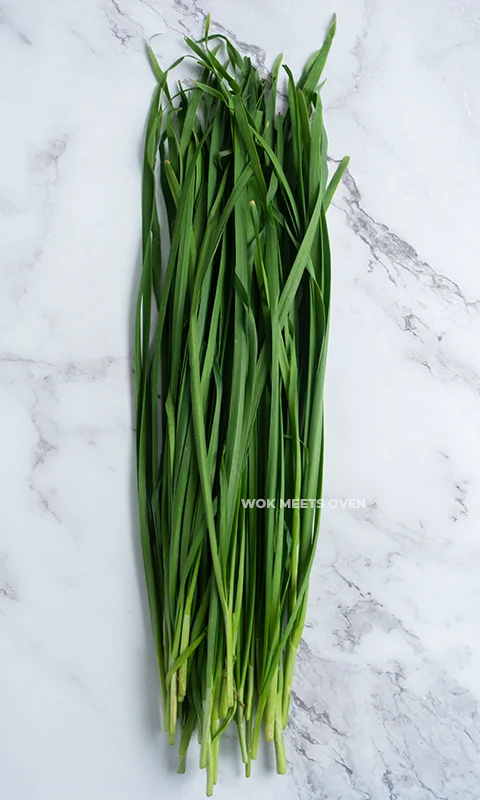
If you don’t live in Asia, then finding yellow chives might be difficult for you, and even if you manage to locate them, expect to pay a fortune for them! None of the local Asian supermarkets in my area sold yellow chives so I had to drive to another city before I was able to finally locate them but when I finally found them, I was shocked by the price tag.
A whopping $30 per kg! 😲
I opted to stick with using Chinese chives instead 😂
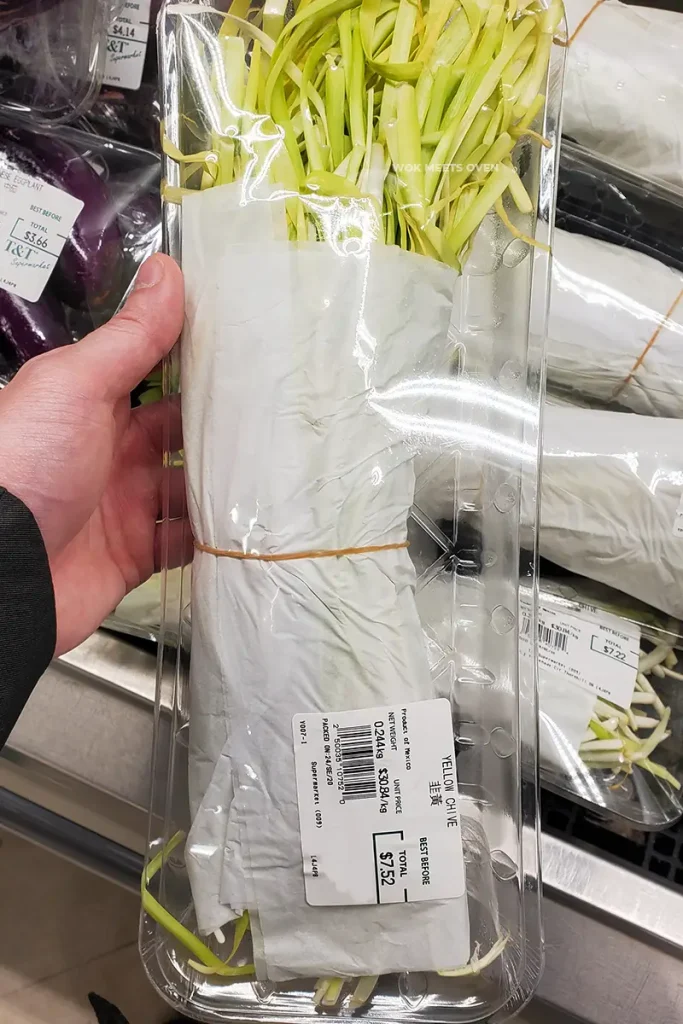
Substitutions & Additions
- Chinese chives: You can substitute it with yellow chives. Traditionally, this recipe is made using yellow Chinese chives, however, this ingredient can be quite a challenge to find overseas. I had to drive to another city before I was able to locate yellow chives, and let me just say, it was ridiculously expensive! Now, if you can’t locate yellow chives or you can’t afford them (I can’t yet 😞), then another good substitute is green onions for this braised longevity noodles recipe. Green onions are readily available at all supermarkets and is relatively cheap too.
- Canned straw mushrooms: With this long-life noodle recipe, you have many choices for canned straw mushroom substitutes. Fresh straw mushrooms, white mushrooms, enoki mushrooms, and oyster mushrooms work well.
- E-fu noodles/ yi mein noodles substitute: I have seen some shops sell a dried version of e-fu noodles such as Walmart, although I haven’t personally tried them myself as I have access to fresh e-fu noodles. The noodles might be called long life noodles or longevity noodles rather than e-fu noodles but will look identical or similar to regular e-fu noodles. Another worthy substitute would be instant noodles since instant noodles have been pre-fried as well or a somewhat thick dried egg noodles. Make sure to select ones that are slightly thicker than regular instant noodles. You won’t get the exact same texture, however it will be “good enough”.
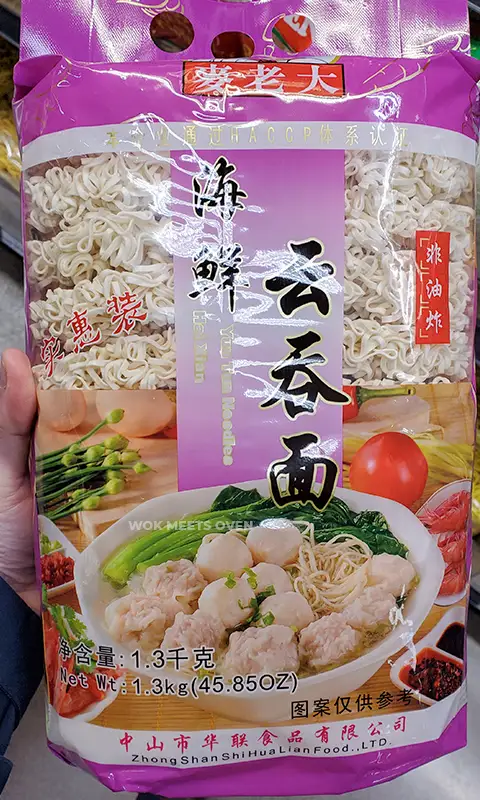
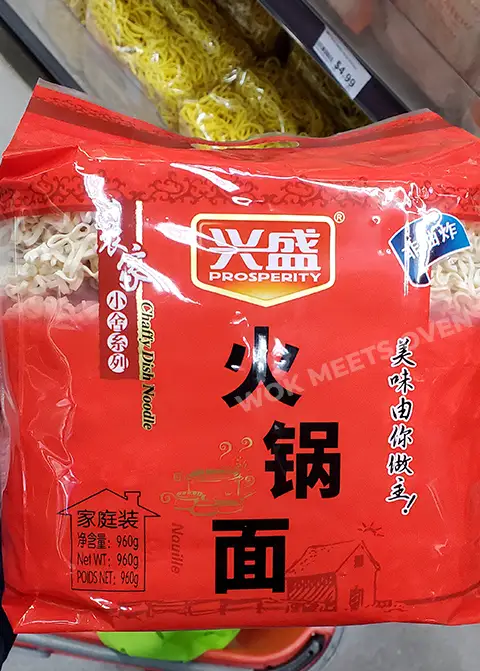
- Protein: You can add protein to this dish if you’d like. Protein sources that go well with this dish include chicken, beef, pork, and imitation crab meat. There is even a famous lobster version of this dish as well called lobster yee mein.
How to Make Braised E-fu Noodles With Mushrooms
Preparing the vegetables:
- To start off, wash all of your vegetables including the canned straw mushrooms.
- Next, we’re going to blanch our straw mushrooms to help remove the grassy smell from the mushrooms.
- In a pot of boiling hot water, add in your straw mushrooms along with a slice of ginger. Let the mushrooms blanch for about 30 seconds before removing the mushrooms and setting them aside to cool down.
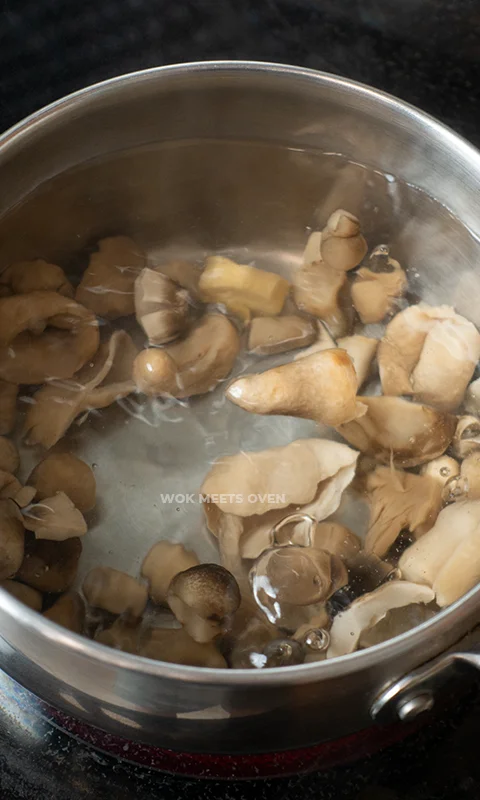
- Next, cut the straw mushrooms into thin slices about a 1/2 inch thick and then set it aside.
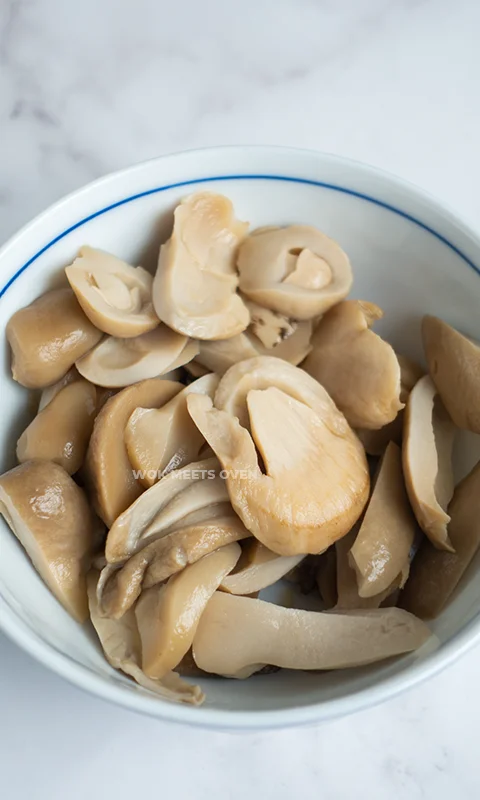
- Now cut your chives into sections about 2 inches long in length and discard the ends and then set the chives aside.
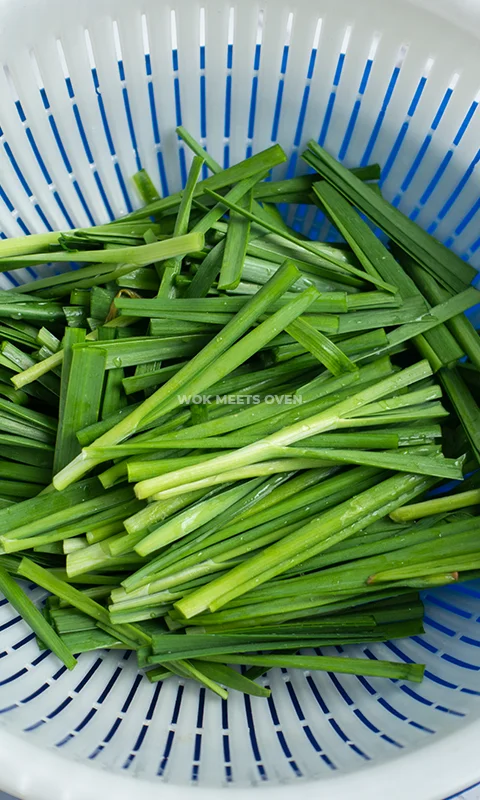
- Next, mince 3-4 cloves of garlic and set it aside.
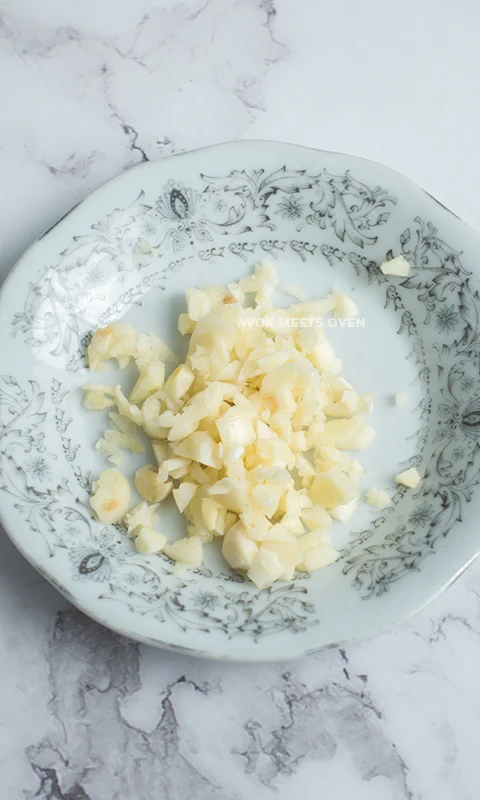
Preparing the sauce:
- In a bowl, combine your light soy sauce, oyster sauce, table salt, sugar, and white pepper. Mix everything well together and then set the sauce aside.
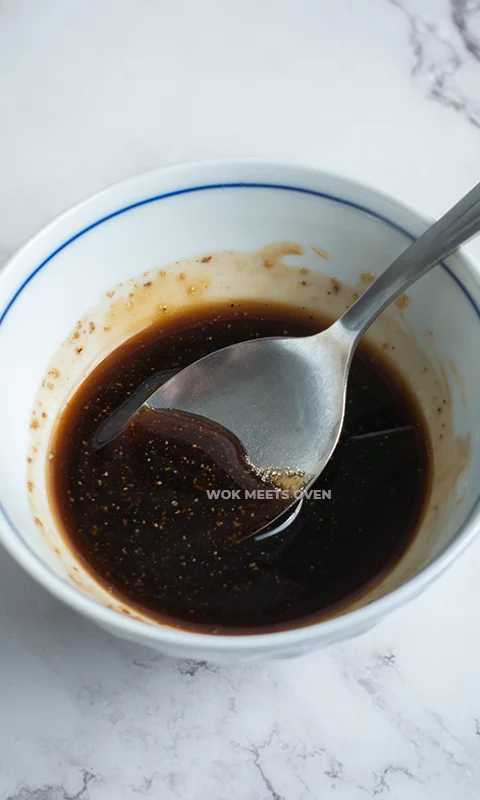
How to Cook Yee Mein:
- Bring a large pot of water to a boil and then add in your yee mein noodles into the pot. Blanch the e-fu noodles for about 30 seconds or until the noodles become loose and separated. While blanching the noodles, use a spider strainer or ladle to press down on the noodles to release excess oil housed inside of the noodles.
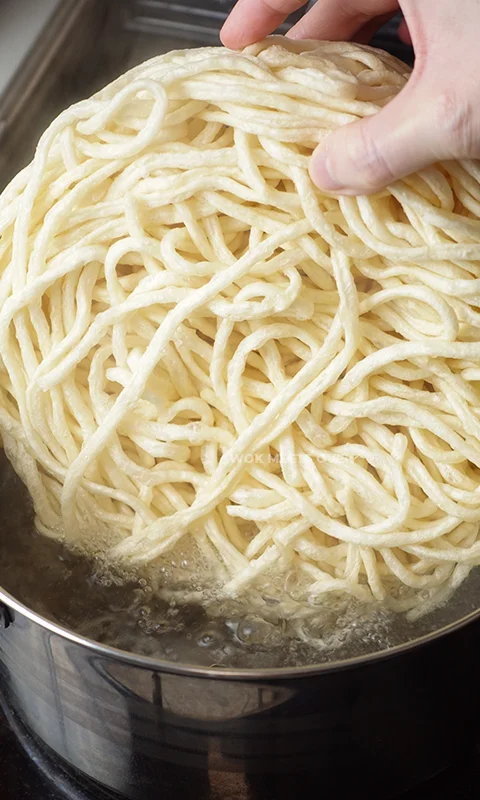
- Once the noodles have become separated and loose, immediately strain and remove the noodles from the pot of hot water to prevent the noodles from becoming soggy.
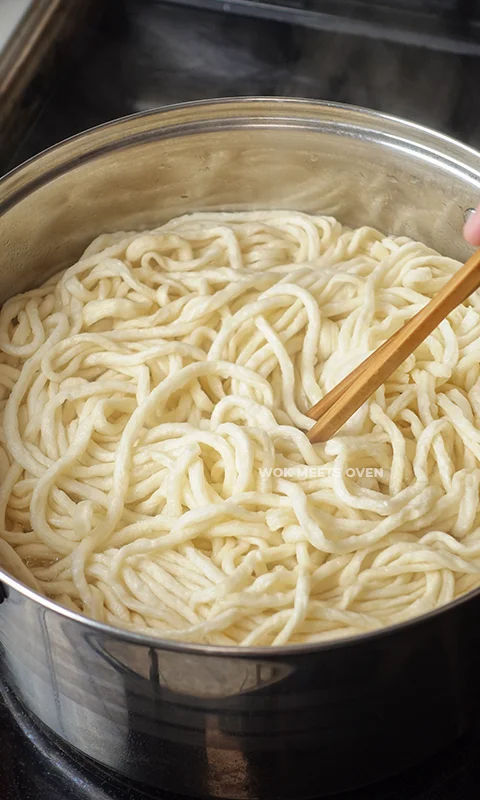
- Run the e-fu noodles under cold water for a few seconds to stop the cooking process and then let the noodles strain and dry in a basket and set it aside.
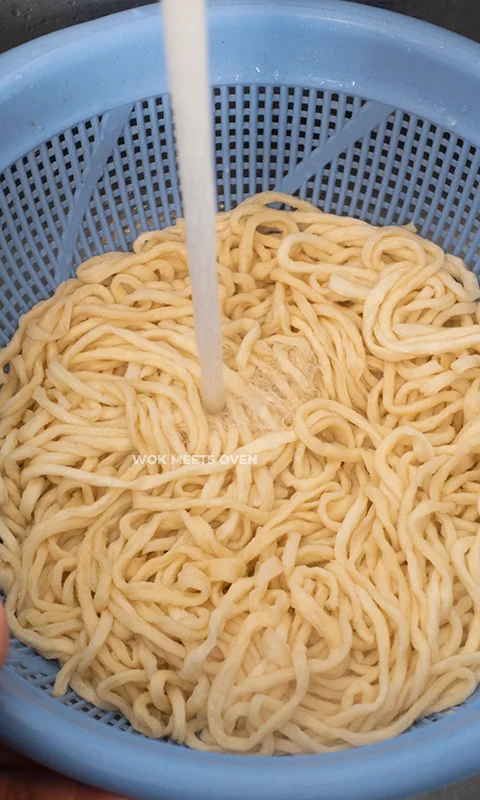
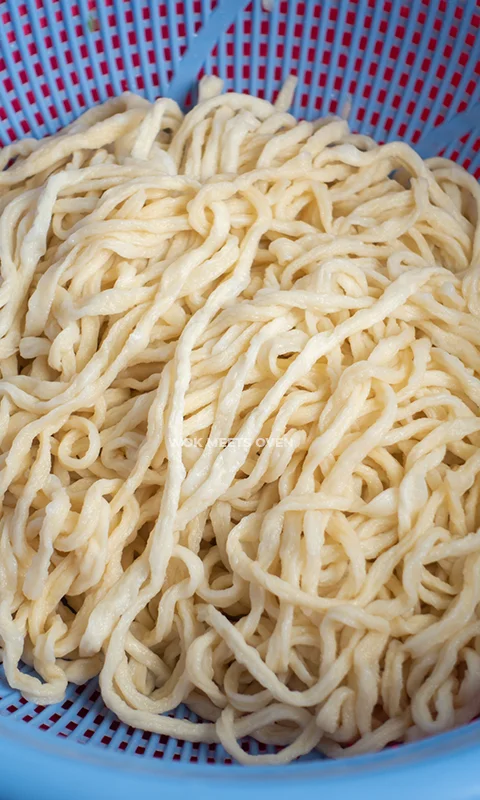
Putting It All Together:
- Heat up a wok over medium heat and then add in your cooking oil. Whirl the wok around to evenly distribute the cooking oil and then add in your mushrooms. Stir-fry the mushrooms for about 10-15 seconds and then add in your minced garlic to the wok as well. Mix everything well together and then add in your cooking wine.
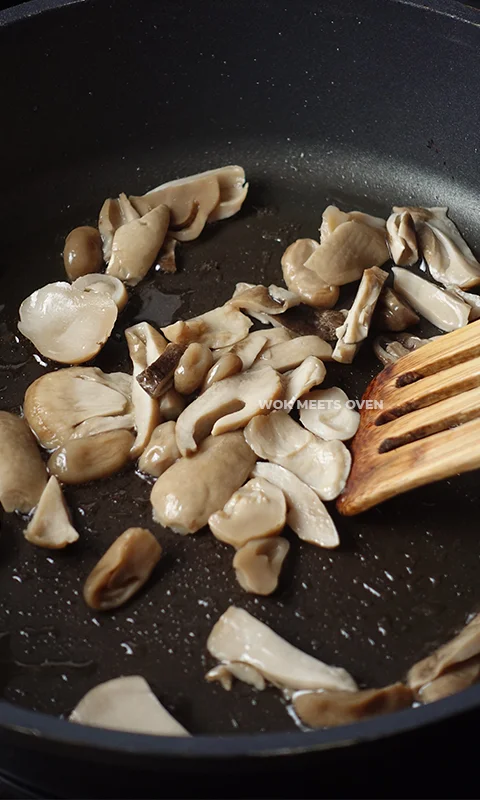
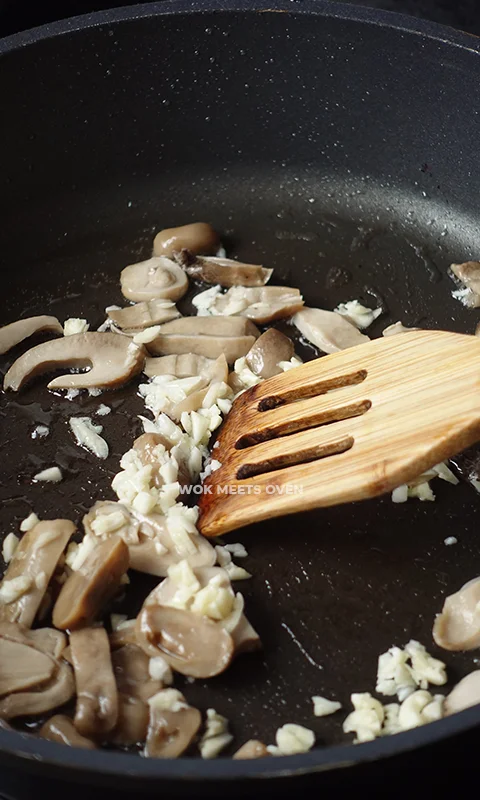
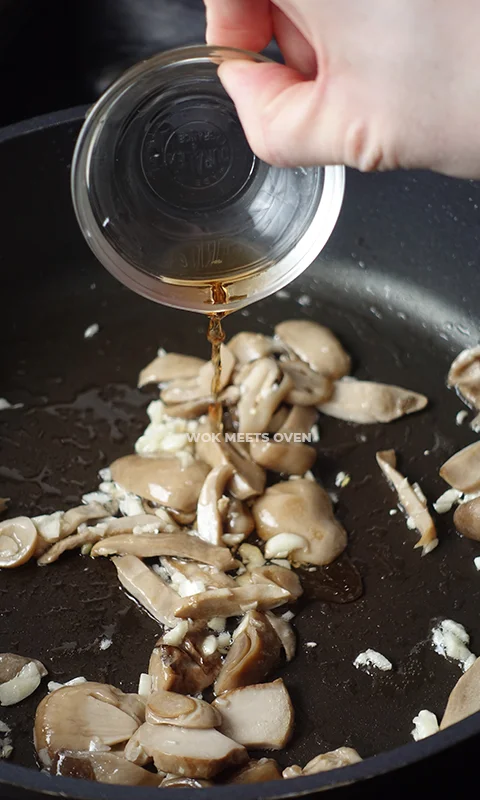
- Mix everything well together for about 10 seconds and then add in your chicken stock/broth.
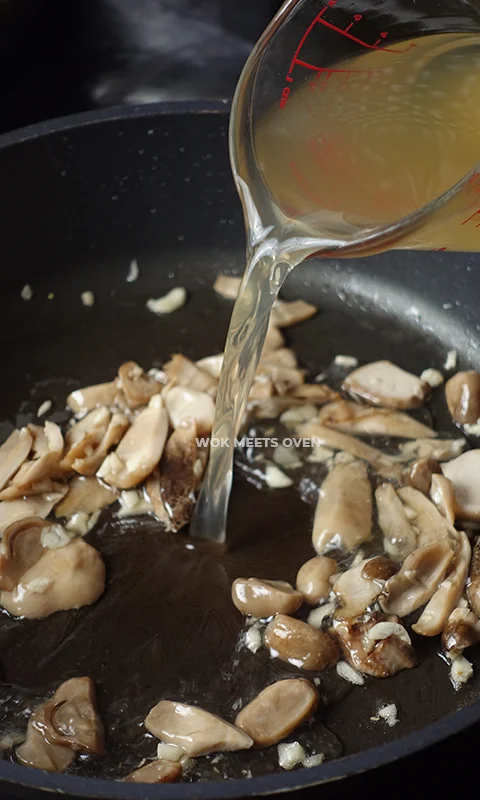
- Mix everything together, followed by adding in your sauce. Give it a quick mix.
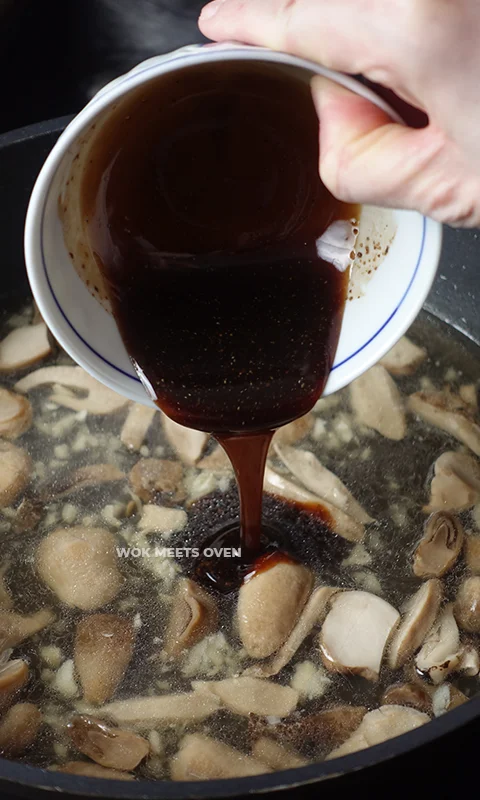
- Now add your e-fu noodles to the wok. Mix everything well together.
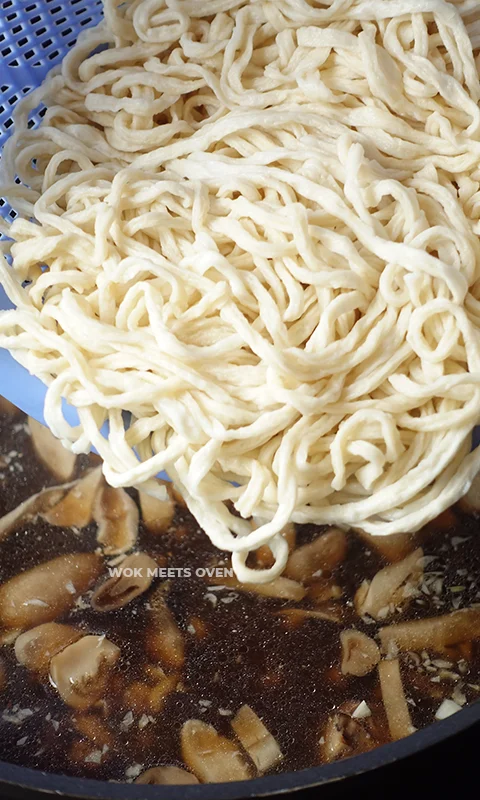
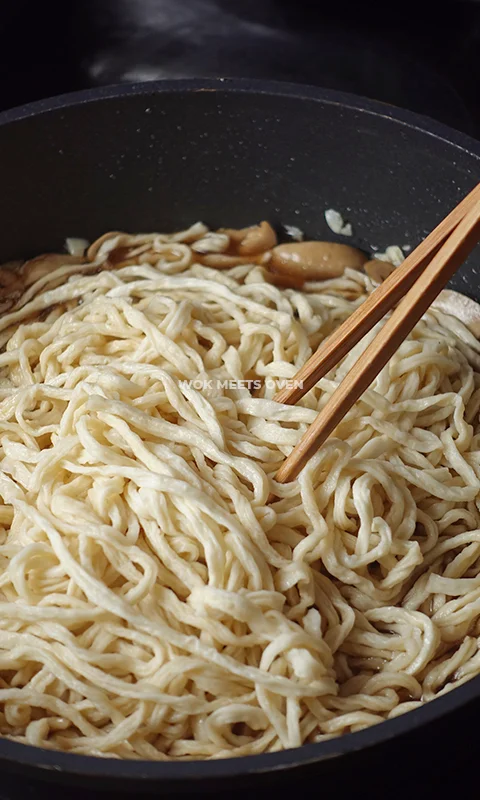
- Then add your dark soy sauce to the noodles. Try to evenly coat and mix the noodles together with the dark soy sauce to get a nice dark color on the noodles.
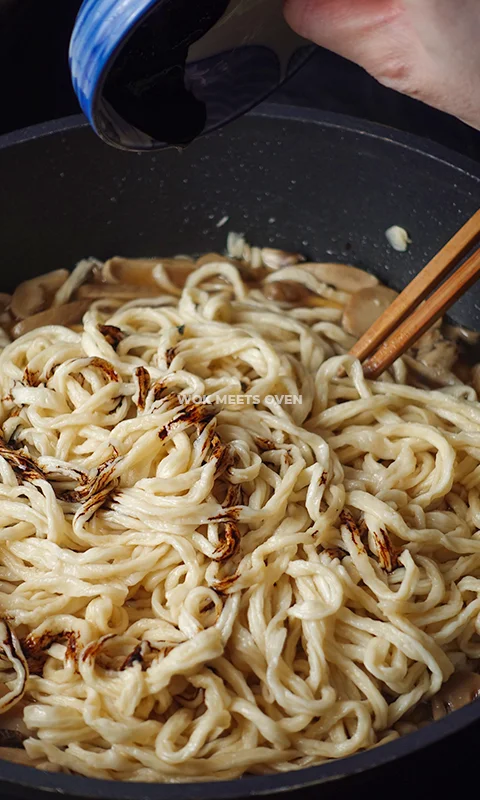
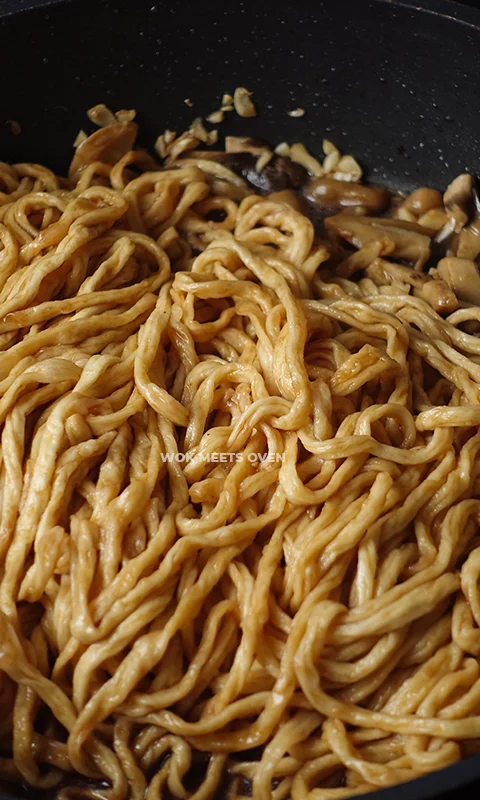
- Now turn down the heat to medium-low and braise the noodles with the sauce.
- Once the sauce has been reduced and most of it has been absorbed by the noodles, turn up the heat to medium-high on the stove.
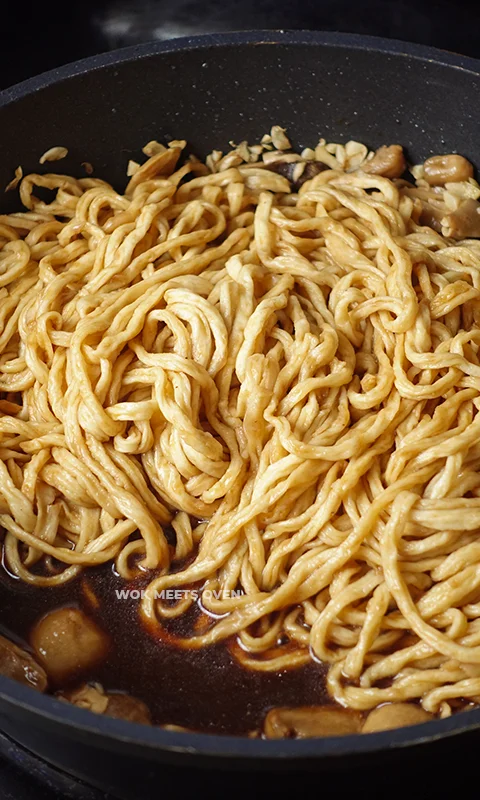
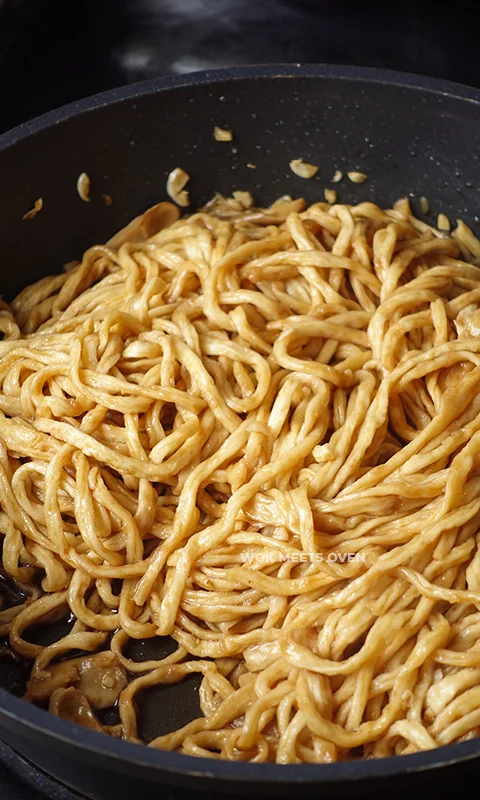
- Now add your chives to the wok along with 1/2 tsp of cooking oil along the edges of the wok.
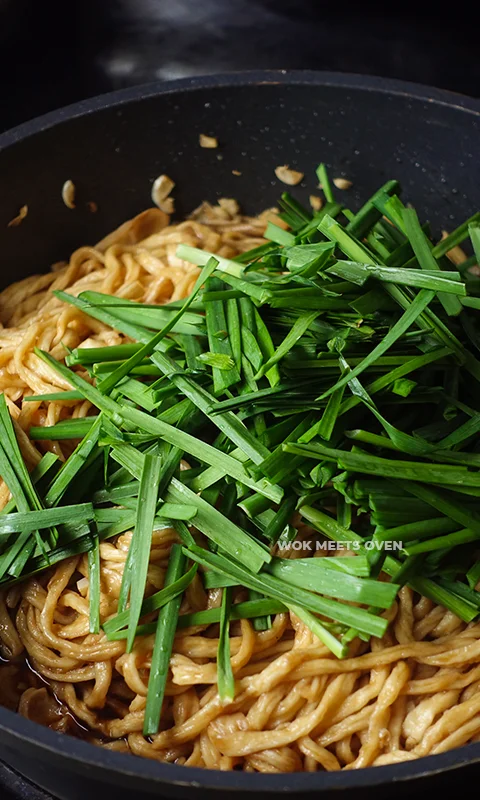
- Mix everything well together for about 30 seconds and then garnish the dish with some sesame oil.
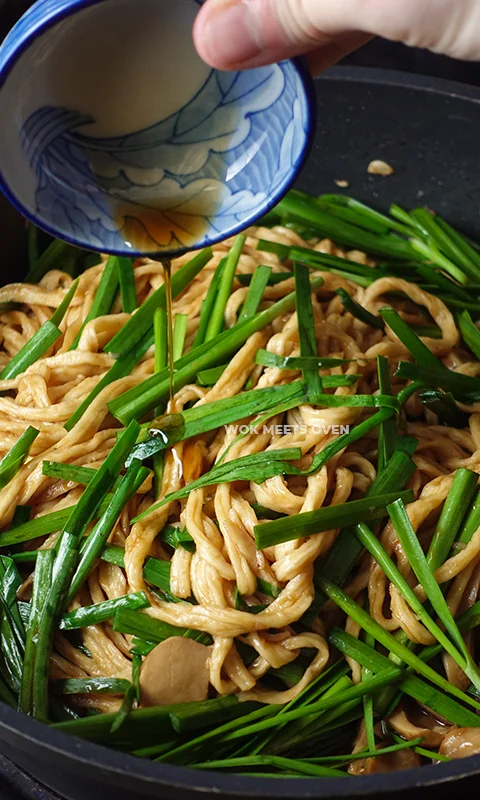
- Give it several more mixes for about 10-15 seconds and then transfer the dish to a bowl or plate and serve while still hot.
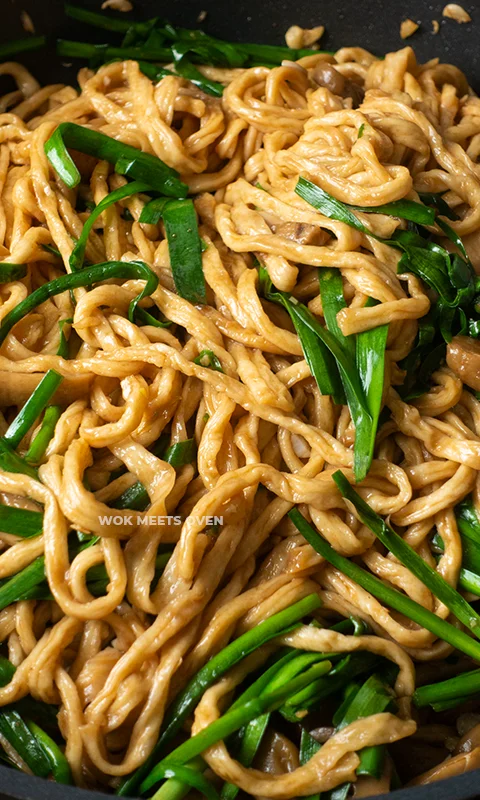
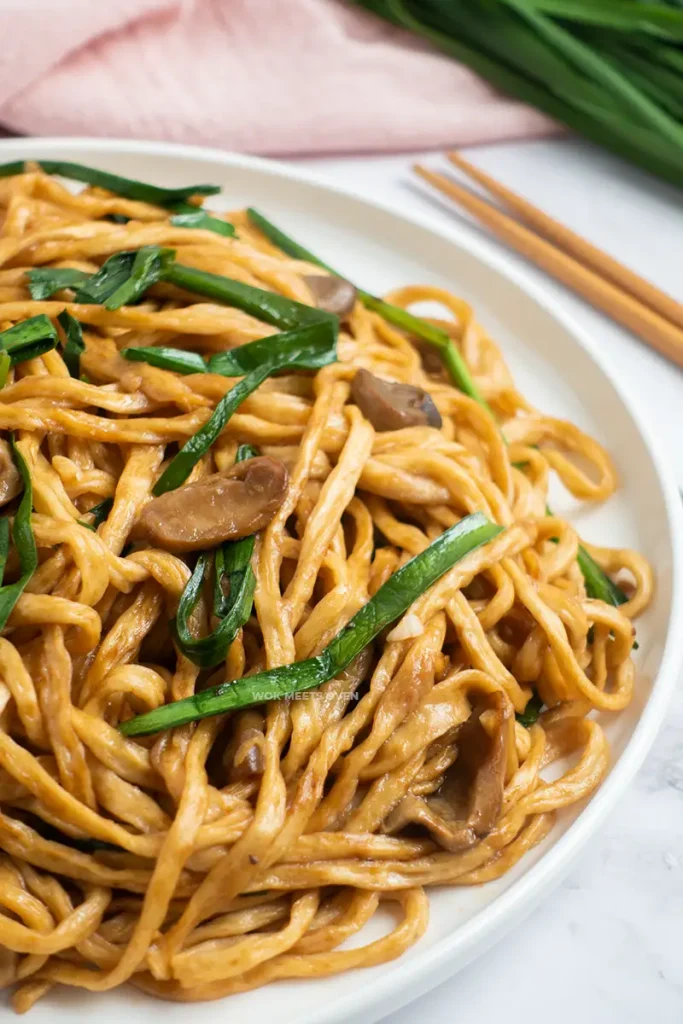
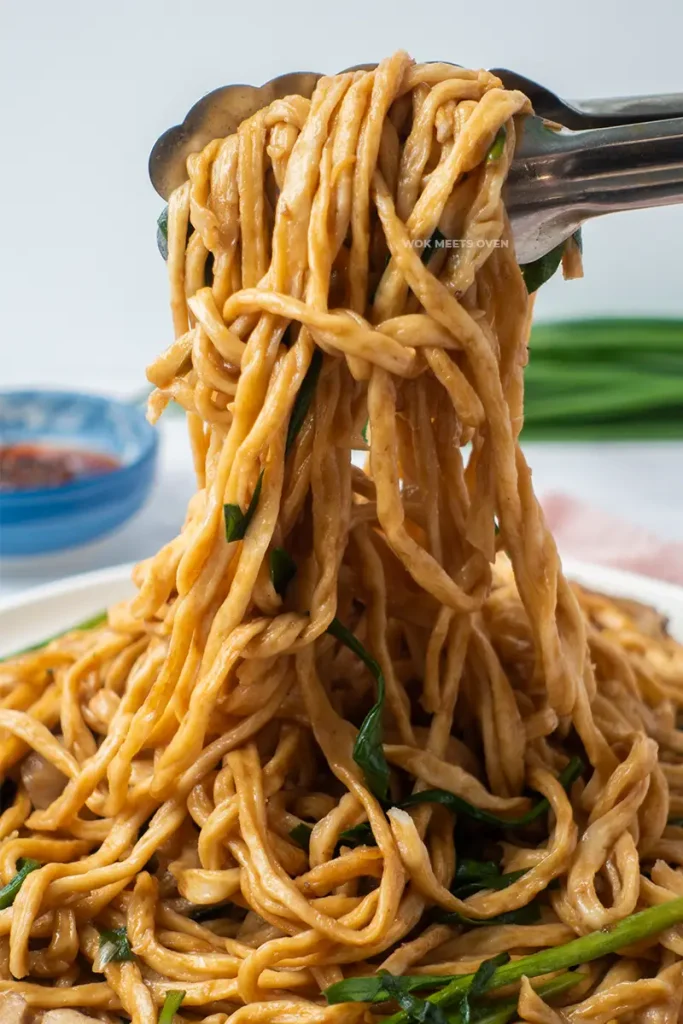
Tips
- Do not blanch more than 1 package of e-fu noodles at one time. Doing so will overcrowd your pot leading to the noodles at the bottom becoming overly soggy and soft while the noodles at the top not being soft enough. This will lead to over blanching the noodles. You’ll also have a more difficult time separating the noodles as well.
- Use a spider strainer or ladle to press down gently on the noodles while blanching them to help release some of the excess oil sitting inside of the e-fu noodles.
- I recommend cooking your noodles in smaller batches instead of 1 large batch on the wok if you have a small wok. This will ensure that the sauce is evenly coated with each noodle and prevent overcrowding in the wok.
Common Mistakes Beginners Make
- Blanching the noodles for too long leads to overly soggy and soft noodles. Only blanch the noodles until they separate and become loose and then immediately remove them from the pot of hot water. Also don’t overcrowd the pot with too much noodles when blanching.
Storage Tips
The braised noodles can be stored in the fridge in an airtight container for up to one week.
Frequently Asked Questions (F.A.Q.S)
Where to Buy Longevity Noodles/ Yee Mein?
Most Asian grocery stores will sell longevity noodles/yi mein in the noodle section. You’ll typically find it in a large round package whereby the noodles have already been fried for you.
How Do I Get Rid of the Excess Oil From the E-fu Noodles?
The noodles typically come pre-fried for you when you buy it from the store. This means that you’ll need to blanch the noodles in hot water prior to use. Place the e-fu noodles in a pot of hot water and blanch the noodles for roughly around 30 seconds until the noodles become loose and separated. Then immediately remove the noodles from the pot. Also while blanching the noodles you can press down on them using a spider strainer to release some of the excess oil sitting inside of the noodles.
How Do I Prevent My Noodles From Becoming Soggy?
Do not blanch the noodles in hot water for too long or they will become soggy. Only blanch the noodles until they become loose and separated (approximately 30 seconds) then immediately remove them from the pot of hot water.
The noodles might appear to be a little underdone however, we will be further cooking the noodles with the sauce in the wok therefore you don’t want to overcook the noodles when blanching them.
Can I Use Chow Mein or Lo Mein Noodles in Place of E-fu Noodles?
No! E-fu noodles have a very unique texture and characteristic. The noodles are somewhat soft but exhibit a chewy and bouncy type of texture and also soak up the sauce really well. This is why the noodles become plump by the time you are finished cooking the dish and the sauce has been absorbed by the noodles.
Can I Add Protein to This Noodle Dish?
Yes of course! There is even a lobster version of this dish that is sold at upscale Chinese restaurants as well. Protein sources that go well with this dish include chicken, beef, pork, and imitation crab meat.
I’m Allergic to Mushrooms, Can I Substitute It With Something Else?
If you’re allergic to mushrooms then you can substitute another vegetable that is more mild in flavor such as carrots and broccoli after blanching them of course.
Can I Freeze This Dish to Eat at a Later Time?
I don’t recommend doing this as your noodles will become soggy and overly soft.
I’m a Vegetarian. How Can I Turn This Into Vegetarian Longevity Noodles?
If you’re trying to turn this yi mein recipe into a vegetarian longevity noodles recipe then I would substitute the oyster sauce with vegetarian oyster sauce, and swap out the chicken broth/stock with just water. Also, you may need to look for some e-fu noodles that don’t contain any eggs in them or swap them out entirely with a different type of noodles. The ones that I used in this recipe contain eggs.
Other Recipes You’ll Love
- Cantonese Soy Sauce Chow Mein Noodles
- Hong Kong Style Shredded Pork Pan-fried Noodles
- Golden Spam Fried Rice Recipe
- Bacon Fried Rice
You can pin this image
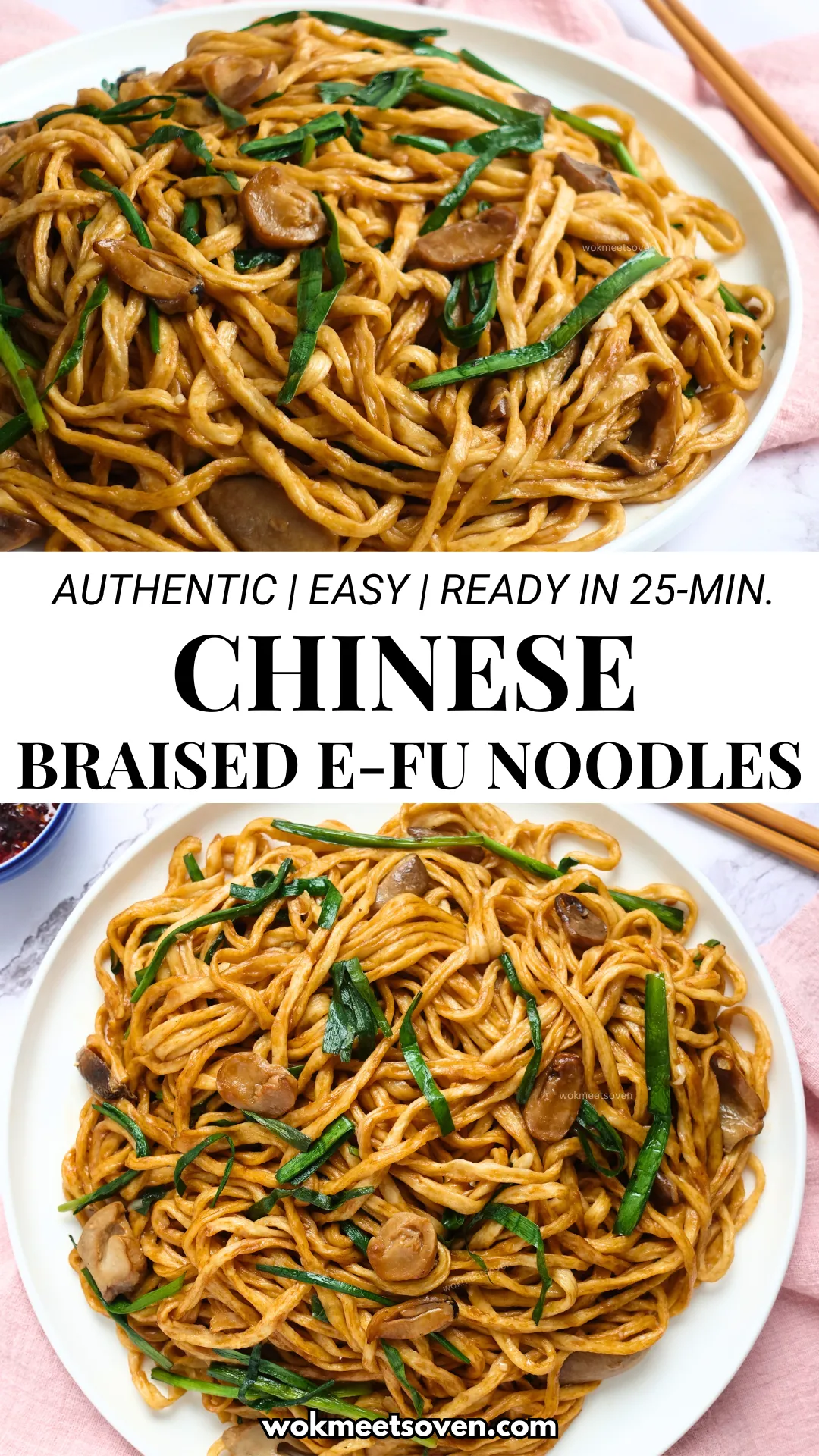
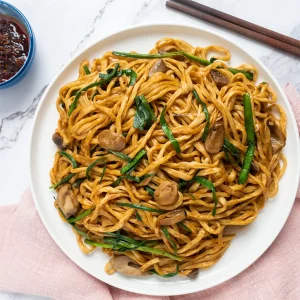
Braised E-Fu Noodles With Mushrooms
Equipment
- 1 Wok
Ingredients
- 200 g E-fu Noodles 1 Package
- 1 Can Straw mushrooms
- 80 g Chinese chives
- 1 Cup Chicken Broth/Stock 250ml
- 3-4 Cloves Minced Garlic
- 1 tsp Chinese cooking wine Shaoxing wine
- 1 Tbsp Cooking oil
- 1 Slice Ginger
- 1 tsp Sesame oil Garnish
Sauce
- 2 tsp Light soy sauce
- 2 Tbsp Oyster sauce
- 1/2 tsp Dark soy sauce
- 1/4 tsp Table salt
- 1 tsp White pepper
- 1 tsp White granulated sugar
Instructions
Preparing the vegetables
- To start off, wash all of your vegetables including the canned straw mushrooms.
- Next, we’re going to blanch our straw mushrooms to help remove the grassy smell from the mushrooms.
- In a pot of boiling hot water, add in your straw mushrooms along with a slice of ginger. Let the mushrooms blanch for about 30 seconds before removing the mushrooms and setting them aside to cool down.
- Next, cut the straw mushrooms into thin slices about a 1/2 inch thick and then set it aside.
- Now cut your chives into sections about 2 inches long in length and discard the ends and then set the chives aside.
- Next, mince 3-4 cloves of garlic and set it aside.
Preparing the sauce
- In a bowl, combine your light soy sauce, oyster sauce, table salt, sugar, and white pepper. Mix everything well together and then set the sauce aside.
Cooking the E-Fu noodles
- Bring a large pot of water to a boil and then add in your yee mein noodles into the pot. Blanch the e-fu noodles for about 30 seconds or until the noodles become loose and separated. While blanching the noodles, use a spider strainer or ladle to press down on the noodles to release excess oil housed inside of the noodles.
- Once the noodles have become separated and loose, immediately strain and remove the noodles from the pot of hot water to prevent the noodles from becoming soggy.
- Run the e-fu noodles under cold water for a few seconds to stop the cooking process and then let the noodles strain and dry in a basket and set it aside.
Putting It All Together
- Heat up a wok over medium heat and then add in your cooking oil. Whirl the wok around to evenly distribute the cooking oil and then add in your mushrooms. Stir-fry the mushrooms for about 10-15 seconds and then add in your minced garlic to the wok as well. Mix everything well together and then add in your cooking wine.
- Mix everything well together for about 10 seconds and then add in your chicken stock/broth.
- Mix everything together, followed by adding in your sauce. Give it a quick mix.
- Now add your e-fu noodles to the wok. Mix everything well together.
- Then add your dark soy sauce to the noodles. Try to evenly coat and mix the noodles together with the dark soy sauce to get a nice dark color on the noodles.
- Now turn down the heat to medium-low and braise the noodles with the sauce.
- Once the sauce has been reduced and most of it has been absorbed by the noodles, turn up the heat to medium-high on the stove.
- Now add your chives to the wok along with 1/2 tsp of cooking oil along the edges of the wok.
- Mix everything well together for about 30 seconds and then garnish the dish with some sesame oil.
- Give it several more mixes for about 10-15 seconds and then transfer the dish to a bowl or plate and serve while still hot.

